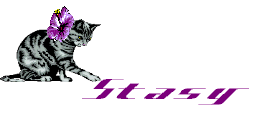


For over two decades, Steve Roach has explored the potential of electronic composition, taking ambience to unparalleled heights and then delving into more rhythmic styles with a refreshing approach that has become a template to emulate. On one front, he has given substance to minimalism, while on another he has shown the limitless possibilities of contemporary electronic music, producing masterful modern classics with his fusion of ethnic elements and conventional EM.

STEVE ROACH: Holding the Space: Fever Dreams II (CD on Timeroom Editions)
This release from 2004 offers 72 minutes of mesmerizing electronics.
Joining Roach on this recording are: Byron Metcalf on percussion and frame drums, Mark Seelig on flute, and Jennifer Grais on voice.
Meanwhile, Roach utilizes a bevy of synthesizers and hybrid grooves to achieve an eerily atmospheric realm that seethes and drifts like a cosmic nebula come to ground. Dreamscapes unfurl, spilling from the cranium to ooze across the audience like vaporous zones of sedation. Textural threads are elongated and bent to form curvaceous moods. Auxiliary electronics filter in and out of the mix like migrant impressions of formless definition.
Frequently, Roach employs treated guitars to escalate the music's haunting quality. These askew tones serve to lend the sonic fog a ghostly quality that is distinctly different from the on-going ethereal ambience conjured by conventional electronic apparatus.
The percussives are ubiquitous, slithering their soothing tempos through the ambience like ingenious serpents. Rhythms wobble and slush unlike regular beats. The result is one of mild tension peppered by subtle invigoration. While initially evoking a tribal flavor, this mood is swiftly replaced with a modern temperament, resounding as timeless rhythms spawned by introspection rather than any expression of arcane spiritual connotation. The consecration turns inward, delving into cerebral folds to draw forth ruminations devoid of any conventional holiness. This new sanctity revolves entirely around neoteric motives.
One track consists entirely of monumental didgeridoo tones accompanied by Grais' choral voice, achieving an ancestral tapestry that captures antediluvian reverence with a human yearning.
As the album progresses, prior elements return to conspire together in glorious effort, producing an increasingly lush soundscape of manifested dreams.

STEVE ROACH/BYRON METCALF/MARK SEELIG: Mantram (CD on Projekt)
This release from 2004 offers 74 minutes of reflective ambience.
Roach plays analog, digital and guitar soundworlds and didgeridoo. Metcalf contributes percussion. Seelig contributes Bansuri flutes and harmonic voice. Stefin Gordon joins them on tamburas.
The voyage begins with delicate electronic textures of an atmospheric nature laced with soothingly breathy flutes. A sedate tempo emerges, defined by understated percussion that patters at the edge of perception, unintrusive but subliminally agitating the subconscious with their languid beats. The direction of this excursion immediately turns inward, away from the outside world of strobing distractions and blaring noise. The harmonic tuneage takes us deeper and deeper into the realm of thought, where only the self exists. Well, that's the point of this music, so we're off to a good start.
Once the ambience has immersed us in our cognitive core, it serves as a medium to conduct clarity. Inner perception is heightened by the relaxing soundscape, as the drifting melodies aid us in sorting through a hierarchy of priority. All things important and trivial are pushed aside, leaving a void that is enhanced by the expansively airy music. Now, the self can grow to fill this cerebral void, establishing its own ranking system for how important anything actually is. Steadfast and complacent, the soundscape reinforces this central calm, urging emptiness to comfortably fill itself from the depths of our psyche.
Stepping outside our head (for the briefest of moments), we evaluate the music, gauging it by external standards. What at first seems to be minimal and sparse is in fact lush and complex. The ethereal tonalities intertwine with expert craftsmanship, exhibiting evidence of meticulous arrangement. The atmosphere ebbs and flows, goaded subtly by the tenuous percussives. Flute textures merge with the electronics, not just following the sonic current but literally embellishing the stream and strengthening the calculated tranquilizing effect. Patterns alter as the passage continues, generating options in the direction of concentration. Overtone voices linger, injecting a humanity to the nebulous vapors. Objectively, one need not retreat into one's head to fully appreciate this music.
While it is up to us to choose the path of our inner meditation, the music does exert an astute influence, a partiality toward cohesion and productivity. Stressful rumination is extraneous here, while optimistic mentation tends to flow better with the ambient current. As the journey continues, purposeful energy slowly infuses the electronic mist and the rhythms grow increasingly motivational. Focus is not only enhanced, the flavor of that focus is guided toward constructive application.
Optimally, one might never notice the end of this music. The soundscape is so soporific, it could continue on inside our head, as endless and vast as our own thoughts. This lasting effect is as worthwhile as the music we used to achieve this state.

| Entire page © 2004 Matt Howarth. All rights reserved. |
Webpage design by
 |